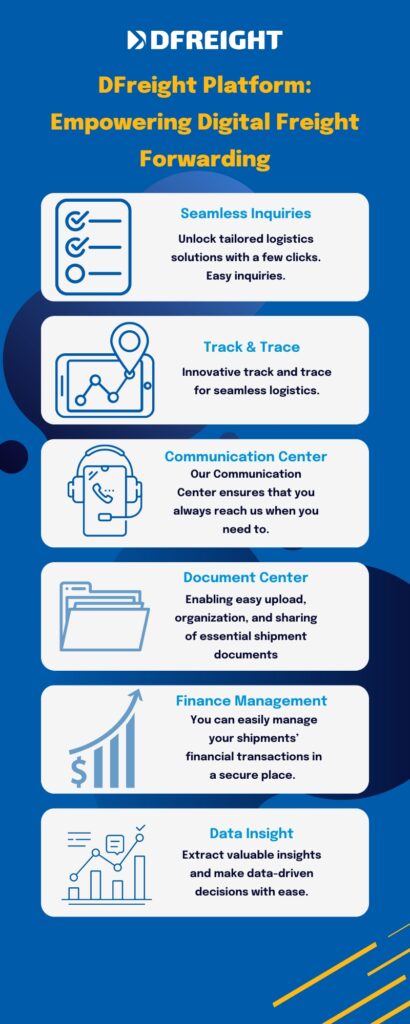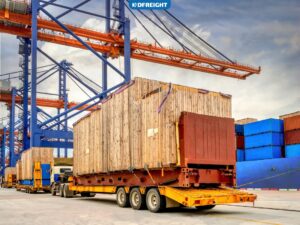Shipping is integral to modern business operations, serving as the vital bridge between products and customers. In an era of global commerce and e-commerce dominance, efficient and reliable shipping practices can significantly impact customer satisfaction, brand loyalty, and overall profitability. As businesses strive to meet the demands of an increasingly connected and fast-paced world, the role of shipping has evolved beyond mere logistics to become a critical touchpoint that influences customer perceptions and purchasing decisions.
The Role of Shipping in Business Operations
Shipping extends far beyond the straightforward movement of goods from point A to point B. It encompasses a complex web of processes, including order processing, inventory management, packaging, labeling, and selecting the right carriers to ensure timely and safe deliveries. Efficient shipping directly contributes to customer satisfaction by delivering products on time and in impeccable condition. On the flip side, shipping mishaps such as delays, damages, or errors can lead to disgruntled customers, negative online reviews, and even lost sales.
Moreover, shipping is no longer just a back-end operation. It has become a visible and crucial aspect of the customer experience. The status updates, tracking information, and estimated delivery times provided to customers shape their perceptions of a brand’s reliability and commitment to service. As a result, shipping has become an extension of a company’s brand identity and reputation.
The Need for Shipping Automation
The challenges posed by the evolving landscape of shipping have given rise to the need for shipping automation. Traditional manual processes, while functional, can no longer keep pace with the demands of modern commerce. Shipping automation presents a solution that goes beyond mere efficiency—it offers businesses the tools to optimize operations, enhance customer experiences, and remain competitive in a fast-changing market.
Shipping automation involves integrating technology, software, and streamlined processes to reduce manual intervention and human error. By automating various stages of the shipping process, businesses can achieve higher accuracy, improved speed, and enhanced scalability. From automatically generating shipping labels to seamlessly integrating with various e-commerce platforms, automation allows companies to allocate their resources more strategically and focus on core business activities.
As the volume of orders increases, shipping automation becomes not just a luxury but a necessity. It empowers businesses to meet customer expectations for faster deliveries and real-time tracking while minimizing the risk of errors that can lead to costly returns and dissatisfied customers. Ultimately, shipping automation is not just about saving time and money—it’s about delivering a consistent and exceptional customer experience that builds brand loyalty and fuels growth.
In the following sections of this blog post, we’ll delve deeper into the world of shipping automation, exploring its benefits, key components, implementation strategies, challenges, and success stories. Whether you’re a small online retailer or a large-scale distributor, understanding shipping automation is essential for navigating the complexities of modern commerce and ensuring that your business remains agile, competitive, and customer-centric.
Are you tired of the complexities and uncertainties that come with traditional freight forwarding? Step into a new era of shipping efficiency with DFreight. Experience the power of automation, real-time tracking, and personalized solutions that redefine how you manage your logistics.
Visit our website to learn how DFreight is revolutionizing the shipping industry in Dubai and beyond. Say goodbye to manual processes and hello to streamlined operations. Your journey to efficient and customer-centric shipping starts here. Explore DFreight today and unlock a world of possibilities for your business.
Table of Contents
Understanding Shipping Automation
Shipping automation is a transformative approach that leverages technology and streamlined processes to enhance various aspects of the shipping process. This methodology aims to reduce manual intervention, increase efficiency, and improve the overall customer experience. By automating different stages of the shipping workflow, businesses can optimize operations, minimize errors, and free up resources for more strategic tasks.
What is Shipping Automation?
Shipping automation involves integrating software, tools, and systems to manage and execute various order fulfillment and shipping tasks. These tasks include order processing, inventory management, labeling and packaging, carrier selection, tracking, and more. Automation accelerates these processes and ensures accuracy by minimizing human error.
Benefits of Implementing Shipping Automation
The decision to implement shipping automation comes with a range of benefits that can significantly impact a business’s operations and bottom line:
- Increased Efficiency: Automation reduces the time and effort required for manual tasks, leading to faster order processing and reduced lead times.
- Enhanced Accuracy: Automation minimizes the risk of human errors, ensuring that the right products are shipped to the right customers with accurate labels and documentation.
- Improved Scalability: As businesses grow, shipping automation can scale seamlessly to handle higher order volumes without a proportional increase in resources.
- Cost Savings: Automation reduces labor costs associated with manual processing and eliminates errors that can lead to expensive returns or re-shipments.
- Better Customer Experience: Timely deliveries, accurate tracking information, and professional packaging improve customer satisfaction and loyalty.
- Data-Driven Insights: Automation systems provide valuable data and analytics that help businesses identify trends, optimize processes, and make informed decisions.

Types of Shipping Automation Solutions
There are several types of shipping automation solutions available, catering to businesses of different sizes and industries:
- Order Management Systems (OMS): These systems centralize order processing, inventory management, and shipping tasks. They often integrate with e-commerce platforms and automate workflows across various departments.
- Warehouse Management Systems (WMS): WMS solutions optimize warehouse operations, including picking, packing, and shipping, by automating inventory tracking and optimizing order fulfillment processes.
- Shipping Software: Shipping software integrates with carriers’ systems to provide real-time rate comparisons, label generation, and tracking information. It streamlines the carrier selection process and facilitates seamless communication.
- E-commerce Platform Integrations: Many e-commerce platforms offer integration with third-party shipping solutions, enabling businesses to manage orders and shipping from a centralized dashboard.
- Robotics and AI-driven Automation: In larger-scale operations, robotics and artificial intelligence (AI) can automate tasks like picking and packing, contributing to higher efficiency and accuracy.
As businesses embrace the digital transformation era, shipping automation is becoming a necessity rather than a luxury. By understanding the concept, benefits, and available solutions, companies can make informed decisions that align with their goals and help them remain competitive in a rapidly evolving business landscape. In the following sections, we’ll explore how shipping automation works, considerations for selecting the right automation system, and the real-world impact of successful implementation.
Key Components of Shipping Automation
Shipping automation is a multi-faceted approach streamlining various aspects of the shipping process, enhancing efficiency and accuracy. It encompasses several key components that collectively contribute to a seamless and optimized shipping workflow. Let’s explore these components in detail:
1. Order Processing and Management
Efficient order processing is the foundation of successful shipping automation. This component involves automating the steps from when an order is placed to its preparation for shipment. Automation software can swiftly capture and process order information, update inventory levels in real-time, and generate packing lists and invoices. By eliminating manual data entry and reducing the risk of errors, businesses can ensure that the correct products are picked, packed, and shipped to customers promptly.
2. Inventory Management
Inventory management is a critical element of shipping automation, preventing stockouts, overstocking, and order fulfillment delays. Automation systems can provide real-time insights into inventory levels, alerting businesses when it’s time to reorder products. Integration with e-commerce platforms and point-of-sale systems enables automatic adjustments to inventory as sales are made, ensuring accurate stock information for customers and preventing overselling.
3. Labeling and Packaging
The accurate labeling and packaging of shipments are essential to ensure that products reach customers in pristine condition and comply with shipping regulations. Shipping automation tools automatically generate shipping labels, packing slips, and other necessary documentation. They can also calculate the most suitable box sizes and packing configurations based on the dimensions and weights of the items, optimizing packaging for cost-effective and safe transit.
4. Carrier Selection and Rate Comparison
Choosing the right carrier and shipping service for each order can significantly impact shipping costs and delivery times. Shipping automation systems can integrate with multiple carriers, allowing businesses to compare rates and services in real-time. This enables intelligent decision-making based on factors such as destination, package size, weight, and delivery speed. Additionally, automation tools can generate shipping labels with carrier-specific barcodes and tracking numbers.
Automating these key components allows businesses to streamline their shipping operations, reduce manual errors, and enhance customer satisfaction. With a solid foundation in place, the rest of the shipping process can flow more smoothly, from tracking packages to managing returns and providing exceptional customer service.
How Shipping Automation Works
Shipping automation is a multifaceted approach that optimizes the shipping process by integrating technology and streamlined workflows. This methodology encompasses various strategies and tools that work together to enhance efficiency, accuracy, and customer satisfaction. Let’s delve into how shipping automation works and the key components that drive its effectiveness:
Integration with E-commerce Platforms
One of the foundational aspects of shipping automation is seamless integration with e-commerce platforms. E-commerce integration ensures that orders placed through online storefronts are automatically captured and processed within the shipping automation system. This eliminates the need for manual data entry and minimizes the risk of errors that can arise when transferring order details from one system to another.
By integrating with e-commerce platforms, shipping automation systems can extract crucial information such as customer details, product SKUs, quantities, and shipping preferences. This integration accelerates order processing and enables businesses to provide customers with accurate shipping quotes and real-time tracking information, enhancing the overall shopping experience.
Data Synchronization and Real-time Updates
Central to shipping automation is the concept of data synchronization and real-time updates. This involves maintaining a synchronized database of inventory levels, order statuses, and shipping information. When an order is placed, the automation system updates the inventory count in real-time, ensuring that stock levels are accurate and preventing overselling.
Additionally, real-time updates are essential for customer communication. Customers expect to be informed about their order’s status, shipping tracking numbers, and estimated delivery dates. Automation systems enable businesses to provide this information promptly, instilling confidence in customers and reducing the need for manual follow-ups.
Workflow Automation and Rule-Based Triggers
Automation in shipping is not limited to isolated tasks—it involves orchestrating entire workflows. Workflow automation ensures that each shipping process step is carried out systematically and efficiently. This involves defining rules and triggers that initiate specific actions based on predefined conditions.
For example, when an order is received, automation can trigger the following sequence of events:
- Order details are automatically populated in the system.
- Inventory levels are updated to reflect the items sold.
- A shipping label is generated with the correct carrier and shipping method.
- The customer receives an email notification with tracking information.
- The order status is updated in the system and communicated to the customer.
By establishing these rules and triggers, businesses can ensure consistency, accuracy, and speed in their shipping processes. Rule-based automation also allows for customized actions, such as flagging orders with specific criteria for manual review or automatically applying shipping discounts based on order value.
Shipping automation seamlessly integrates different systems, synchronizes data, and automates workflows to ensure that orders are processed, packaged, and shipped accurately and efficiently. This reduces potential errors and frees up valuable resources, allowing businesses to focus on strategic growth initiatives and providing exceptional customer experiences.
Choosing the Right Shipping Automation System
Selecting the right shipping automation system is pivotal in shaping your shipping operations’ efficiency, accuracy, and overall success. To make an informed choice, it’s important to consider several factors that align with your business’s unique needs and growth aspirations. Here are key considerations when choosing a shipping automation system:
1. Evaluating Your Business Needs
Before diving into the world of shipping automation, take a comprehensive look at your business’s specific requirements. Consider factors such as order volume, shipping destinations (domestic or international), types of products you offer, and any unique shipping challenges you may face. Identifying pain points and areas for improvement will guide you in selecting a system that addresses your most pressing needs.
Ask yourself questions like:
- What volume of orders do you handle daily, weekly, or monthly?
- Do you ship to a diverse range of locations or primarily to specific regions?
- Are there any regulatory or compliance requirements specific to your industry or products?
- Do you offer multiple shipping options, such as expedited or standard?
Understanding these aspects will help you narrow your shipping automation system’s essential features and capabilities.
2. Considering Integration Capabilities
A seamless integration between your shipping automation system and your existing tech stack is crucial for efficient operations. Ensure that your chosen automation solution can integrate seamlessly with your e-commerce platform, inventory management software, and any other relevant systems. Integration capabilities facilitate the real-time transfer of order details, inventory data, and customer information, minimizing manual data entry and reducing the risk of errors.
Check if the shipping automation system integrates with popular e-commerce platforms, accounting software, and customer relationship management (CRM) systems. Integration streamlines processes and enhances your ability to provide accurate tracking information and a smooth customer experience.
3. Scalability and Future-Proofing
As your business grows, your shipping automation needs may evolve. Choosing a system that can scale alongside your growth trajectory is essential. A solution that can handle increased order volumes, new shipping destinations, and additional product lines without sacrificing efficiency is critical.
Look for features that support scalability, such as handling batch processing, managing multiple warehouses or fulfillment centers, and accommodating different shipping carriers. Future-proofing your investment means selecting a system that can adapt to changing market trends, technologies, and customer expectations.
Additionally, consider whether the automation system offers the flexibility to accommodate new shipping methods, carrier partnerships, and even emerging technologies like machine learning or artificial intelligence.
By thoroughly evaluating your business needs, integration capabilities, and scalability options, you’ll be well-equipped to make an informed decision when selecting a shipping automation system. Remember that the right system should align with your current operational requirements while positioning your business for sustainable growth and improved customer satisfaction.
Implementing Shipping Automation: Step-by-Step
Embarking on the journey of implementing shipping automation is a significant endeavor that requires careful planning and execution. This step-by-step approach will guide you through the process of successfully implementing shipping automation in your business:
1. Assessing Current Shipping Processes
Before diving into automation, it’s essential to have a clear understanding of your current shipping processes. Document each step, from order receipt to delivery, highlighting pain points, bottlenecks, and areas where errors commonly occur. By identifying these challenges, you’ll be better equipped to address them during the automation process.
Conduct a thorough analysis of order volume, peak shipping times, shipping destinations, and customer expectations. This assessment will be the foundation for designing an automation strategy that aligns with your business’s unique requirements.
2. Selecting the Appropriate Automation Tools
Identify the automation tools and solutions that best suit your needs based on your assessment. Consider tools that align with the critical components of shipping automation, such as order processing, inventory management, labeling, carrier selection, and tracking.
Research and compare different automation software options, considering factors like user-friendliness, features, integration capabilities, customer support, and cost. Look for solutions that offer customization options to tailor the automation to your specific workflows.
3. Integration with Existing Systems
Smooth integration between your chosen automation tools and your existing systems is vital to ensure a seamless transition. Verify that the selected automation tools can integrate with your e-commerce platform, inventory management software, accounting systems, and any other relevant platforms.
During integration, ensure that data synchronization is accurate and that real-time updates are functional. Test different scenarios to validate that the information flows correctly between systems without errors or delays.
4. Training and Onboarding Teams
Introducing automation requires training your team on the new tools and processes. Develop a comprehensive training plan that covers all aspects of the automation system, from order processing to tracking and customer communication.
Offer hands-on training sessions, user manuals, and video tutorials to familiarize your team with the new workflows. Encourage team members to ask questions and provide ongoing support as they adapt to the changes.
5. Testing and Iteration
Before fully implementing shipping automation, conduct thorough testing of the automated workflows. Run test orders through the system to ensure that orders are processed accurately, labels are generated correctly, and tracking information is updated as expected.
Identify any issues or glitches and promptly address them with your automation provider. Iteratively refine your automated processes based on the feedback from your team and testing results.
6. Gradual Implementation
Consider a phased approach rather than transitioning to full automation all at once. Begin by automating a subset of your shipping processes, closely monitoring the results, and making necessary adjustments. This allows you to address any challenges in a controlled environment before scaling up to automate all shipping operations.
By following this step-by-step implementation approach, you can smoothly transition your shipping operations into an automated framework. Remember that shipping automation is not a one-time event—it requires continuous monitoring, fine-tuning, and adaptation to ensure optimal performance and alignment with your business goals.
Overcoming Challenges in Shipping Automation
While shipping automation offers numerous benefits, it’s not without its challenges. Recognizing and proactively addressing these challenges is crucial to ensuring your automated shipping processes’ successful implementation and ongoing effectiveness. Here are some common challenges in shipping automation and strategies to overcome them:
1. Data Accuracy and Consistency
Challenge: Maintaining accurate and consistent data across various systems and platforms can be challenging. Inaccurate inventory levels, incorrect shipping addresses, or mismatched product information can lead to shipping errors and customer dissatisfaction.
Solution: Implement rigorous data validation processes and automated data synchronization between systems. Regularly audit and reconcile data to identify discrepancies and rectify them promptly. Consider using a master data management system to ensure data integrity across different platforms.
2. Customization and Flexibility
Challenge: Every business has unique shipping workflows and requirements. Off-the-shelf automation solutions might not align perfectly with your specific processes, leading to concerns about customization and flexibility.
Solution: Look for automation tools that offer customization options or allow you to create rule-based triggers to accommodate your specific needs. Choose systems that can adapt to changes in your operations over time, providing the flexibility to refine workflows as your business evolves.
3. Addressing Technical Glitches and Downtime
Challenge: Like any technology, automated systems can experience technical glitches, errors, or downtime, disrupting your shipping operations and potentially impacting customer satisfaction.
Solution: Establish a robust system for monitoring and maintenance. Regularly update your automation software and integrate it with reliable technical support from your automation provider. Implement backup plans and contingency measures to handle system failures and ensure business continuity.
4. Change Management and Employee Resistance
Challenge: Introducing new automated processes may meet resistance from employees who are accustomed to traditional methods. Change management and ensuring team buy-in can be challenging.
Solution: Prioritize communication and training. Clearly communicate the benefits of automation to your team, emphasizing how it will make their jobs easier and more efficient. Provide comprehensive training sessions and offer ongoing support to help employees adapt to the new workflows.
5. Cost Considerations
Challenge: While shipping automation can lead to cost savings over the long term, there may be upfront costs associated with software, training, and integration.
Solution: Conduct a thorough cost-benefit analysis to understand the potential return on investment. Consider not only the immediate costs but also the long-term efficiencies and competitive advantages that automation can bring. Evaluate different pricing models and choose the one that aligns with your budget and business goals.
6. Monitoring and Optimization
Challenge: Implementing shipping automation is not a one-time event. Continuous monitoring and optimization are necessary to ensure the system performs optimally and addresses evolving business needs.
Solution: Establish a process for regular system audits and performance reviews. Analyze data and track key performance indicators (KPIs) related to order processing time, error rates, customer feedback, and cost savings. Use these insights to make informed decisions and fine-tune your automation workflows.
By anticipating and addressing these challenges, you can maximize the benefits of shipping automation while minimizing potential disruptions. Remember that challenges are opportunities for improvement, and a proactive approach to overcoming them will help you build a more efficient, accurate, and customer-centric shipping operation.
Real-life Success Story: DFreight – Revolutionizing Freight Forwarding in Dubai
A digital disruptor redefines freight forwarding in the heart of Dubai’s bustling business landscape. DFreight, a pioneering digital freight forwarder, has harnessed the power of automation and technology to streamline logistics processes and create a new standard of efficiency in the industry.
The Journey Begins
DFreight embarked on its journey with a clear mission: to simplify the complexities of international shipping and bring transparency to the freight forwarding process. Traditional freight forwarding often involved manual paperwork, multiple intermediaries, and a lack of real-time visibility. DFreight recognized the need for innovation and built a platform that leverages automation to transform the logistics landscape.
Automating Operations
DFreight’s success story is rooted in its strategic adoption of shipping automation. The company developed a comprehensive digital platform that integrates various aspects of the shipping process, from booking and documentation to tracking and customs clearance. By automating these stages, DFreight was able to significantly reduce manual errors, accelerate processes, and enhance customer experiences.
Key Milestones

- Efficiency Boost: Automation allowed DFreight to optimize its operations, reducing the time required to process bookings and manage documentation. This led to faster order fulfillment and reduced lead times for customers.
- Real-time Tracking: The platform provided customers real-time tracking updates, ensuring transparency and visibility throughout the shipping journey. This level of insight empowered customers to make informed decisions and plan their supply chain more effectively.
- Customization and Integration: DFreight’s platform allows customers to tailor their shipping preferences, choose from a range of carriers, and seamlessly integrate their existing systems with the DFreight platform.
Results and Impact
DFreight’s commitment to innovation and automation yielded remarkable results:
- Enhanced Customer Experience: Customers experienced improved transparency, reduced manual intervention, and quicker response times, contributing to higher levels of satisfaction.
- Reduced Costs: Automation minimized errors, reducing the need for costly rework or corrective actions. Additionally, optimized processes led to cost savings and improved resource allocation.
- Competitive Edge: By offering a seamless digital experience and efficient shipping solutions, DFreight gained a competitive advantage in a traditional industry.
Future Prospects
DFreight’s success story highlights the transformative power of automation in the freight forwarding sector. As the company continues to evolve, it aims to expand its services and capabilities while staying at the forefront of technological innovation. DFreight’s journey underscores the importance of embracing automation and technology to drive efficiency, enhance customer experiences, and remain competitive in a rapidly changing business landscape.
DFreight’s success inspires businesses worldwide, demonstrating that even the most traditional industries can be revolutionized for the better with the right vision, dedication, and strategic implementation of automation. As the logistics landscape continues to evolve, digital disruptors like DFreight are leading the charge, reshaping the future of shipping, and setting new standards for efficiency and customer-centricity.
Ready to Upgrade Your Shipping? Embrace Shipping Automation Today and Transform Your Logistics Efficiency!
The story of shipping automation is one of continuous evolution, where technology and ingenuity intersect to redefine what is possible. As we navigate the future, businesses that embrace automation will be at the forefront of shaping the next chapter in shipping’s history.
So, as you embark on your own journey towards automation, remember that the road may have its challenges, but the destination promises a new era of efficiency, accuracy, and customer satisfaction. With shipping automation, the future of commerce is brighter than ever before.
What is Shipping Automation?
Shipping automation refers to integrating technology and streamlined processes to optimize various aspects of the shipping process. It involves automating tasks such as order processing, inventory management, labeling, packaging, and carrier selection to enhance efficiency and accuracy.
How does Shipping Automation Benefit Businesses?
Shipping automation offers numerous benefits, including increased efficiency, improved accuracy, enhanced scalability, reduced costs, better customer experiences, and data-driven insights for optimization.
What Types of Tasks can be Automated with Shipping Automation?
Shipping automation can automate tasks such as order processing, inventory tracking, label generation, carrier selection, real-time tracking updates, and communication with customers regarding shipping status.
How Does Shipping Automation Impact Customer Experience?
Shipping automation improves customer experience by providing real-time tracking updates, accurate delivery estimates, and efficient order processing. This transparency and reliability contribute to increased customer satisfaction and loyalty.
Is Shipping Automation Suitable for Businesses of All Sizes?
Yes, shipping automation can benefit businesses of all sizes, from small online retailers to large-scale distributors. The level of automation can be tailored to each business’s specific needs and growth trajectories, making it a valuable solution across the board.














